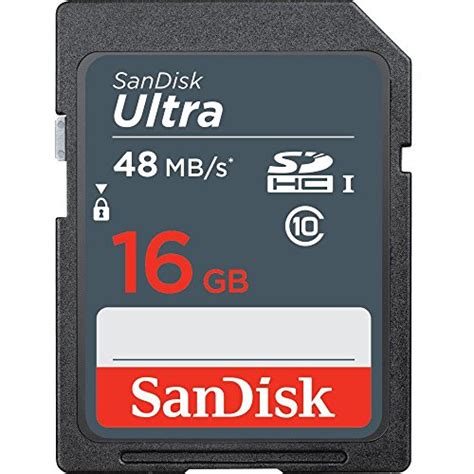
Do you usually start your ESL lessons by diving right into grammar drills, textbooks, and new vocabulary? Or, do you use ESL warm-up activities at the beginning of each class? Warm-up activities for English classes are an important teaching tool and often make or break a lesson. With that in mind, we’ll give you some easy warm-ups you can incorporate into your virtual or physical classroom!
If you’re new to teaching, you’ll want to get initial training and qualification with a TEFL certificate. You can explore our online TEFL courses to get started!
Table of Contents
When starting a language lesson, it is important for you as the teacher to get your students into the right mindset first. This applies to all ages and levels. ESL warm-up activities for adults may differ a little from ESL games and activities for kids and teens, but they are of the same importance.
Until students are focused, they’re not going to retain new information. Warm-ups provide a way to refocus students’ attention. For example, warm-ups can help if your students are tired from school or work, are stressed or preoccupied with personal problems, or come to class either overly excited or tired.
ESL warm-up activities and icebreakers can also be used in the middle of the lesson if your students need a break. If you notice that students are no longer paying attention, are bored or tired, or just need a respite from difficult content, pull out a warm-up activity in the middle of class to get things back on track!
Need a last-minute ESL lesson plan? Try these!
Warm-ups are designed to grab students’ attention and motivate them to participate. ESL warm-up activities for online classes are especially important because you need to keep your students engaged in front of their computer monitor for quite some time. Throwing in some quick and easy ESL games for teaching online every once in a while does just the trick.
Here’s an example of a teacher using the collaborative whiteboard function of an online teaching platform to engage students in a quick, fun activity:
Effective warm-up activities for teaching English should be:
Check out these tips for creating ESL lesson plans.
A teacher incorporates a song in an ESL class with young learners.
Here are five original ESL warm-up activities for young learners that respect children’s need to move their bodies frequently and express themselves creatively.
You can get more ideas in this Micro-credential course: Games and Activities for the Online Classroom (Young Learners).
This is a simple ESL warm-up activity that includes a lot of movement. You can use it when your students enter the physical or virtual classroom for the first time. They won’t know each other yet, so starting the lesson by introducing each other with their names is a good idea.
Have your students stand in a circle so that they can see each other. Give them a minute to come up with a gesture or pose that represents them. Then, the first student steps forward and says, “My name is [insert name],” accompanied by the gesture or pose that he or she came up with. Now, everybody repeats the student’s name and gesture. Next, student B steps forward and says his or her name with a gesture or pose. Now, everybody repeats student A’s and student B’s names and gestures. Next is student C. Continue until everybody has said their name and all students can remember all of the names and gestures in one round.
Students take turns acting out a word provided by you while their classmates try to guess what it is. This is a good opportunity to review vocabulary from a previous lesson or to try and introduce a new word. Young learners become really immersed in this activity and they usually try very hard to act out the word’s meaning.
Get more tips for teaching ESL vocabulary lessons.
Have all students stand up, and ask them a question — feel free to get creative! You could ask anything (How is the weather? What time is it? Which superhero wears the colors red and blue? What did I have for breakfast today? etc.). The student who raises his or her hand first gets a chance to answer. If the answer is wrong, the next student to raise their hand gets a chance. If the answer is right, that student gets to sit down. The goal is to not be the last student standing!
Teacher Juicy Mae plays a game with her ESL student online.
This is a great team-building ESL warm-up activity that can be played in pairs or groups.
Depending on the class size, divide the students into pairs or groups. For online platforms that don’t allow breakout groups, students can work individually. Assign each group or person a letter (and maybe don’t use difficult letters such as X or Q). They now have to find two adjectives and a noun with that starting letter to describe themselves. When everybody is ready, each group introduces themselves in front of the class.
Students usually come up with funny, original ideas that make everybody laugh. You will hear things like “We are amazing, active animals,” “We are cool, cheerful classmates,” or “We are beautiful, bouncy balloons.”
Want to teach English online to groups? Get started here.
Break students into pairs and tell them that they have one minute to talk about themselves. They can choose what they want to discuss, such as something they like, where they live, their birthday, how old they are, their hobbies, and so on. When the time is up, their partner talks about himself or herself. After these two minutes, switch up the pairs and start over. Continue swapping partners each round until everyone has talked with every classmate.
If you are teaching English online and cannot split students into pairs, simply give them each one minute to address the whole class.
Thai students in an ESL activity
As mentioned before, teenagers and adults have an equal need for a fun warm-up activity as young learners. Here are some slightly more complex warm-ups that will engage your older students and prepare them for the lesson.
Take a look at these tips when using games to teach English to adults online.
For this activity, you can divide the students into small groups or pairs or they can work on their own. Come up with a few sentences before class, and write the sentence’s words on your physical or virtual whiteboard in a random order. The first group or individual student to unscramble the words and read the sentence aloud correctly wins that round.
When creating the sentences, you can use motivating mottos, the target language of the day, or review a grammar point from a previous lesson.
Here’s how to teach English grammar — even if you’re terrible at it!
This is a great ESL warm-up activity for encouraging teamwork and practicing vocabulary and grammar. It can be used in the online classroom as long as you have a whiteboard behind you that is visible to the students.
Ask each student to give you one word they know. This can be a noun, an adjective, a preposition, anything they want to include in the story. Collect the words by writing them on the whiteboard. When you have all the words from your students written on the board, let them collaborate to tell a story with them. If they need help, you can ask questions like “How shall we start?” “Which word shall we use first?” or “What comes next?”
Check off the words as the class tells the story, and make sure everyone gets a chance to contribute!
Read more about the power of storytelling in the ESL classroom.
This activity revolves around improving fluency and asking questions. Students will have a chance to learn about each other and to use English freely. It’s a good activity for intermediate to advanced learners.
Write a topic on the board or tell your students the topic of the day. This can be as simple as “Food” or more complex, such as “Your favorite memory.” Put students into pairs and have them interview their partner by creating questions related to the topic. They can ask as many questions as they can within one minute, and then their partner has one minute to ask them questions. After the time is up, put students into new pairs and repeat as time allows.
Teacher Jhonny teaching an online class to his adult student
For this warm-up activity for English teaching, show students a map of a town, and choose a starting point and a destination on the map. Then, in either pairs or as a whole class, have students provide the directions to the destination to guide you through the map. You can use this primarily as a speaking activity or even get in extra writing practice by having students write the directions down.
Alternatively, you can give students maps (either digitally or physically), a starting point, and a set of directions they have to follow to find out where their destination is. Have students race to see who can follow the directions the fastest and figure out the secret destination first!
Print out some inkblots or images of abstract paintings ahead of the lesson. Hold up one of the pictures and ask the class, “What do you see in this picture?” Give your students some time to think, then call on them or let them raise their hands. Let them express the impressions, feelings, or words they associate with the picture, without correcting them or interrupting them. It is very important that the students feel comfortable expressing their thoughts for this warm-up activity.
The results are very rewarding, and you can learn a lot about your students’ personalities, which you can reflect on later to tailor your lessons to your students.
For more ideas, take this Micro-credential course: Games and Activities for the Online Classroom (Adults).
ESL warm-up activities, no matter for which age, level, or group size, lead up to a fun, successful, meaningful lesson that your students will get more out of. Warm-ups give your students a chance to use the English they’ve learned so far, to review, and to experiment with new expressions — plus, they’re loads of fun!
After backpacking Australia on a Working Holiday visa, Bridge graduate Johanna traveled to Japan for a year to teach English. She then moved to New Zealand for another two years before returning to her chosen home country, Japan, where she currently lives. Now, with more than eight years of professional English teaching experience, Johanna enjoys her expat life in Japan teaching teenagers at a private junior and senior high school, where she recently received tenure after only two years. When she’s not teaching, Johanna continues to travel regionally and explore new places.
SEE MORE
 Smead 100 Recycled Pressboard Classification File Folder 1 Divider 2quot Expan
Smead 100 Recycled Pressboard Classification File Folder 1 Divider 2quot Expan
 Classic Accessories Veranda Water Resistant 11 Foot Patio Umbrella Cover
Classic Accessories Veranda Water Resistant 11 Foot Patio Umbrella Cover
 Sandisk 16 Gb Class 10 Sd Hc Ultra Flash Memory Card 10 Pack Bundle With
Sandisk 16 Gb Class 10 Sd Hc Ultra Flash Memory Card 10 Pack Bundle With
 Fairwin Braided Leather Dog Training Leash 6 Foot 56 Foot Military Grade H
Fairwin Braided Leather Dog Training Leash 6 Foot 56 Foot Military Grade H
 3m Reflective Dog Leash 5ft Long With Traffic Padded Handle Dog Training Leas
3m Reflective Dog Leash 5ft Long With Traffic Padded Handle Dog Training Leas
 How To Be Your Dogs Best Friend The Classic Training Manual For Dog Owners
How To Be Your Dogs Best Friend The Classic Training Manual For Dog Owners
 Classical Naptime For Tots
Classical Naptime For Tots
 Doggie Stylz Set Of 2 Reflective Therapy Dog In Training Removable Patches Wit
Doggie Stylz Set Of 2 Reflective Therapy Dog In Training Removable Patches Wit
 6 Pcs Service Dog In Trainingworkingstress Amp Anxiety Response Embroidere
6 Pcs Service Dog In Trainingworkingstress Amp Anxiety Response Embroidere
 Service Dog In Training Patch With Hook Back And Reflective Lettering For Servic
Service Dog In Training Patch With Hook Back And Reflective Lettering For Servic
 Four Paws Wee Wee Pee Pads For Dogs And Puppies Training L Gigantic Xl St
Four Paws Wee Wee Pee Pads For Dogs And Puppies Training L Gigantic Xl St
 Pny 128gb Elite X Class 10 U3 V30 Microsdxc Flash Memory Card 100mbs
Pny 128gb Elite X Class 10 U3 V30 Microsdxc Flash Memory Card 100mbs














